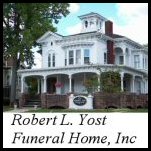Brad Pearson, Newark-Wayne Hospital Foundation
Posted
on Aug 19, 2015
A number of years ago, Dick Kirchhoff served on the Newark-Wayne Hospital Auxiliary board and has been interested in the hospital ever since. He asked Brad Pearson to speak to us today about the new patient entrance and the unity of the Newark-Wayne Hospital and Clifton Springs Hospital.
Brad is the director of the Newark Wayne Hospital Foundation. Prior to that, he was with Highland Hospital. One of the factors that drew him to the Newark foundation was the fact that Clifton Springs would be joining Rochester Regional Health System. This would bring two hospitals together to work as one regional health system.

It has been about four months since the merge. Both hospitals are under one president, and each has its own COO, chief nursing officer and plant manager. They share a consolidated human resources department. One result of the consolidation of services is that certain services are offered in one hospital or the other. For example, cancer services are offered at Clifton Springs, while all maternity services are offered at Newark. This allows the two hospitals to utilize the strongest resources from both hospitals into one location. Both facilities have full emergency departments and long-term care.
Over the next year, a communications network is being implemented which will allow all the hospitals in the regional health system to communicate and collaborate. Each of the hospitals has or will have its own area of specialty. As mentioned, Newark’s is labor and delivery, Clifton Springs’ focus is on cancer. Rochester General is the heart hospital; Unity has orthopedics and neurology. By avoiding duplication of services, the health system can lower costs.
Brad also talked about a new project beginning at Newark-Wayne. They are putting in a new entrance and “patient access center” with groundbreaking slated for spring next year. The new patient access center will streamline services for patients. As an example, a patient coming in for out-patient surgery might need to have blood drawn and medical imaging done. They would also need to register, have insurance documented and arrange for follow-up care. These are all handled in several separate offices throughout the facility. The new patient access center will put all of these services together in one central area, which will make the patient experience easier.
The new entrance will also provide direct access to the DeMay center and the medical office building. The hospital’s chapel was displaced with the expansion of the emergency department; a new chapel will be included in this project. Essentially, the new patient access center will act as a hub for the hospital.
Interested in being a sponsor?
Download the website sponsorship guide
Download the website sponsorship guide


